Portuguese wet lease airline Hi Fly is showing off its reconfigured A380.
In this post:
Hi Fly’s unusual Airbus A380
Hi Fly is the first charter airline in the world to have an A380, which is an awesome concept as an avgeek, but questionable otherwise. Hi Fly acquired this A380 after Singapore Airlines chose not to renew the lease on its first A380 after 10 years. The plane has the registration code 9H-MIP.
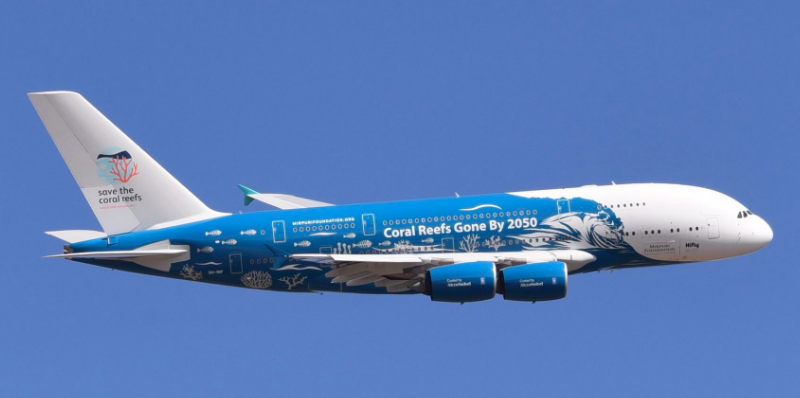
Since Hi Fly is a wet lease airline, the intent was to use this to operate flights on behalf of other airlines, but demand has been rather limited. The reality is that even when demand for air travel is high, there aren’t many airlines that need the amount of capacity offered by an A380, especially with Hi Fly’s configuration.
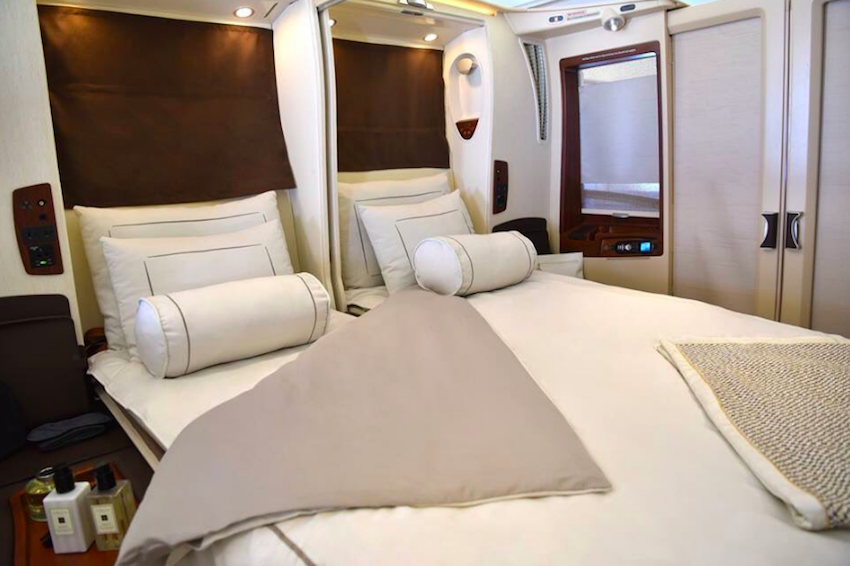
I’ve written in the past about just how little flying this A380 has been doing. For example, in the first half of 2019, the Hi Fly A380 operated fewer than 10 flights for airlines.
Suffice to say that in recent months demand for this has dried up even more, as airlines around the world have grounded planes. Now Hi Fly is getting creative with how this A380 can be used.
Hi Fly A380 reconfigured for cargo
Hi Fly has created extra cargo capacity on its A380 by removing economy seats from much of the aircraft. This is to meet the increased demand for cargo during the coronavirus crisis.
The specially configured aircraft now offers more than 300 square meters of cargo space, for close to 60 tons of cargo. To my surprise, it looks like both the lower and upper deck were reconfigured (I would have assumed they mostly just reconfigured the lower deck, but that’s not the case).
Hi Fly has shared some pictures of the new interior (it’s interesting how a few seats were left in some parts of the cabin):
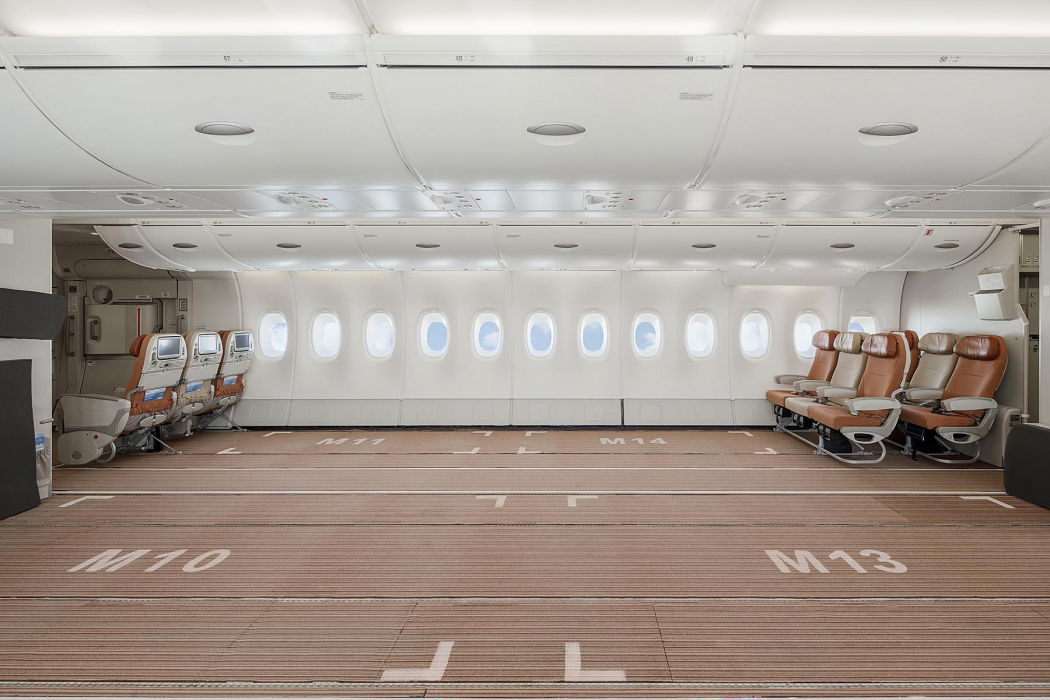
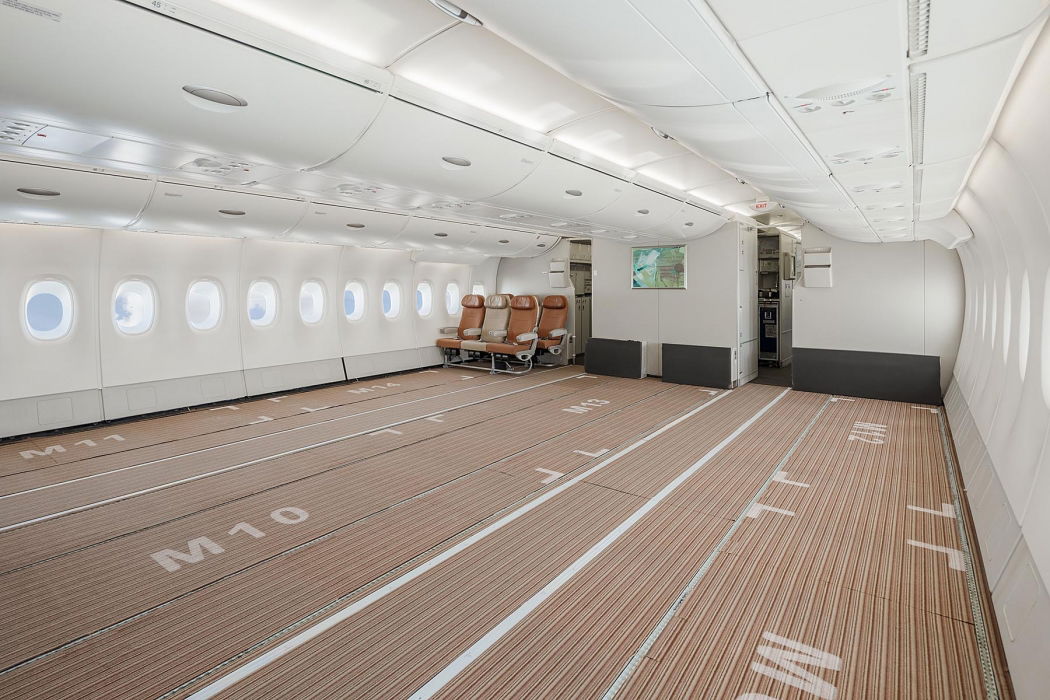

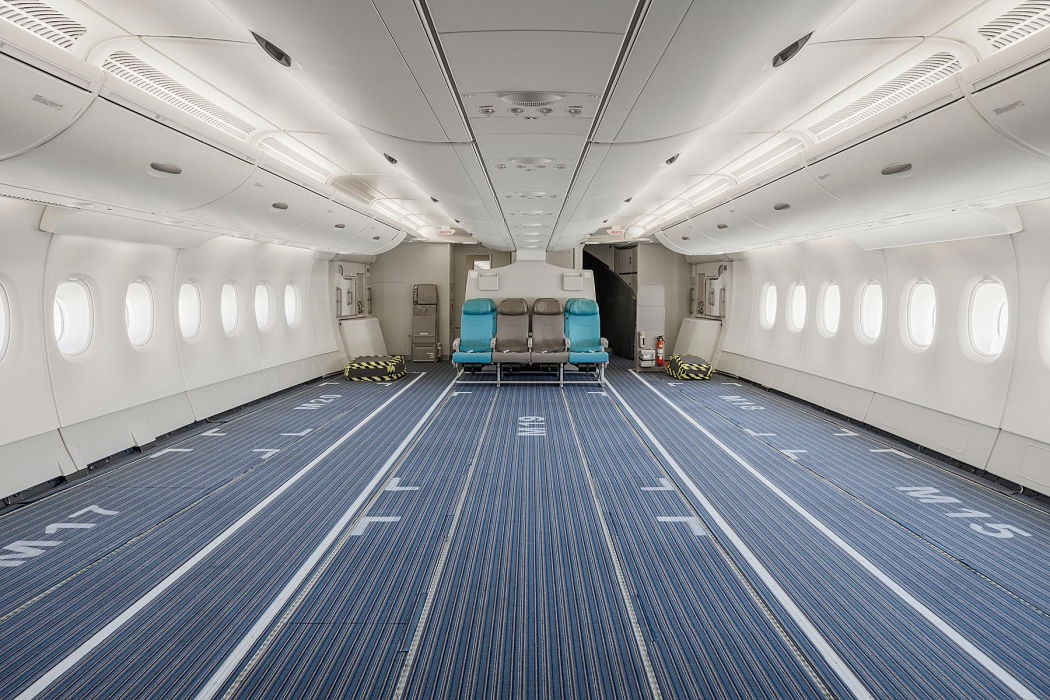
Then here’s a video of the new cargo cabin:
Bottom line
Airlines around the world have been temporarily reconfiguring aircraft into cargo configurations, given how the demand for travel has changed. It’s cool to see Hi Fly’s A380 be converted into a mostly cargo configuration.
With A380s around the world either being parked or retired, unfortunately I still wouldn’t expect these planes to have much of a second life with cargo operations. That’s especially true when you consider that the upper deck isn’t very practical for cargo, both in terms of loading the cargo and in terms of the weight limit.
Even so, I imagine Hi Fly’s A380 will have more “work” now than in the past…


Beautifully explained Steve !! , thank you
WR2 - While I love that random people on the internet not only feel like they know better than teams of experts dedicated to the field, but they think people would actually listen to them instead of the experts.
medical equipments like PPE are high in volume but very light, hence the usage of upper deck.
The best explanation I've seen as to why the A380 doesn't make a good freighter. It's not the front door.
There are a number of factors as to why the A380 will never make a good freighter, and those include ceiling height, ULD tare weight and length. It’s all about the economics and the things that limit revenue potential. To the surprise of many, the lack of a nose cargo door, like the 747, has...
The best explanation I've seen as to why the A380 doesn't make a good freighter. It's not the front door.
There are a number of factors as to why the A380 will never make a good freighter, and those include ceiling height, ULD tare weight and length. It’s all about the economics and the things that limit revenue potential. To the surprise of many, the lack of a nose cargo door, like the 747, has very little to do with it.
Ceiling height - when in a passenger version of a 747, the ceiling is at what seems like a normal height, approximately 7 feet, and in the A380 it is about the same. But in the 747 there is a great deal of space above the passenger area; for the private jet version you can get an option called Aeroloft, and this was once proposed for the airline version as well. The point here is that there is considerable space above the passenger area, and on the cargo version this allows for pallets up to 10 feet tall.
ULD Tare Weight - this is the non-revenue weight of the containers or pallets in which almost all cargo is placed. If you have fewer, but taller, pallets of cargo, you earn more revenue since you are carrying fewer ULDs. With two decks on the A380 you would have considerably more ULDs, with less cargo per ULD, than would be used on a 747 or 777, and this means less revenue generated per sq. ft. of floor space.
Length - the A380 about 8 feet longer than a classic 747 (-100 to -400 series) but 11 feet shorter than a 747–8. Without the cockpit in the way, the floor area of the main deck of even an older 747 is longer than the equivalent space on the A380; the additional deck on the A380 might mean more floor space overall, but then we get back to the ULD weight and cargo height restrictions; it’s more about cubic feet than square feet. In addition, because of the wing sweep, the main deck cargo doors would most likely be at the front of the aircraft which would lead to weight and balance issues during loading and offloading. With their cargo doors positioned ahead of the wing I dreaded working DC-10/MD-11 cargo flights because of the need to slowly move the cargo fore and aft in order to keep the aircraft in balance; if you weren’t careful the aircraft would end up on its tail, and we had some close calls. With the 747 and 777 you put the cargo in behind the wing and move it forward into position, speeding the loading process and always assuring that there is sufficient weight on the nose to keep the center of gravity in an advantageous position. Because of this issue, handling a smaller MD-11 actually took more time than doing the same work on a larger 747.
When the first 747F aircraft came out, they only had the nose door and no side cargo door (SCD). It was thought that cargo would be moved in the same 20 and 40 foot containers used on container ships, trains and trucks. These containers are about 8 feet high, so the clearance under the cockpit section was designed around this restriction. But using containers like this brings up three major problems that I mentioned earlier, namely ceiling height, tare weight and weight and balance issues during loading/offloading. Those containers are heavy and they don’t take advantage of the additional ceiling height in the back of the aircraft. This method of transporting goods might have worked OK if it weren’t for that pesky oil crisis around 1973, at which point maximizing revenue became even more important.
The SCD is really what makes the 747 a great freighter, and why you frequently see passenger aircraft converted into freighters. With the SCD you can fill a majority of the aircraft with 10 ft high pallets (except, of course, under the upper deck, where you are still limited to 8 ft.) The nose door does make loading exceptionally long pieces easier, but such cargo is actually quite rare and doesn’t earn as much money for the airline as pallets stacked to the ceiling. Many of my cargo customers didn’t even bother opening the nose door unless they had some specialty cargo that could only come out that way.
When the 747–8 was being developed, Boeing asked the airlines if they wanted longer range or more payload capacity. Over the last 40 years the world’s freighter routes have been optimized around the capabilities of the 747F, and as such, the additional range was of little interest.
When all is said and done, the multiple main decks of the A380 are not an advantage in cargo service and would require new and more complex loaders to be developed to support the upper main deck; having two main deck loaders and a lower deck loader or two would further drive up support costs and slow down ramp operations due to congestion. The proposed cargo door positions would also slow down operations due to weight and balance issues. The additional range that an A380F might offer is irrelevant to the major players in the industry. The additional ULDs required to support two main decks would seriously eat into revenue. In summary, because of the design compromises that make the A380 good for hauling a huge load of passengers from hub to hub, there is little, if anything, that an A380F could do better than the 747 or 777 in cargo service.
One Revenue occurrence per annum needed for :
Tripple dip leasing write-offs
VAT off-sets
You can't have 300 square meters of cargo volume. You can have 300 square meters of floor space for cargo but if you want volume it would be cubic meters.
I suspect you meant to say this.
To the people asking. The plane is designed for bulk loading. They aren't loading pallets but instead regular boxes. Think how Air Canada converted some of their 777s to just fly packages. It doesn't require any stiffened floors.
Cargo is the reason why the last 747 will be retired after the last A380, unless Airbus or a third party invests in certifying a cargo conversion for the A380.
Joe Sutter was genius for designing the 747 to have the flight deck on a "hump" on the upper level, which allows the nose to swing open to load cargo. The A380, on the other hand, has the flight deck on the lower level....
Cargo is the reason why the last 747 will be retired after the last A380, unless Airbus or a third party invests in certifying a cargo conversion for the A380.
Joe Sutter was genius for designing the 747 to have the flight deck on a "hump" on the upper level, which allows the nose to swing open to load cargo. The A380, on the other hand, has the flight deck on the lower level. It is not possible to convert the A380 to have a swinging nose for cargo, but adding some large cargo doors would still be effective.
Hi Fly's cargo A380 is only useful for small pallets that can be wheeled through the side doors. I don't know how many airports actually have loading equipment that can reach the upper deck of the A380, so they might have to lift lighter items such as PPE up the stairs in order to make use of the upper deck.
I think HiFly could be coming onto something with their a380- sure; demand is currently non existent, but in a few years time demand will increase, and with lots of airlines retiring a380s/747s due to the current pandemic, I can see a need for HiFly's a380 in the future- especially on leisure routes. For example, VS have retired all the 747s (which are normally full in the summer and school holidays, especially on the Orlando...
I think HiFly could be coming onto something with their a380- sure; demand is currently non existent, but in a few years time demand will increase, and with lots of airlines retiring a380s/747s due to the current pandemic, I can see a need for HiFly's a380 in the future- especially on leisure routes. For example, VS have retired all the 747s (which are normally full in the summer and school holidays, especially on the Orlando route) and when demand recovers, in a few years times, they simply won't have enough aircraft to meet demand so I could see either VS or Virgin Holidays chartering the a380 in the busy periods. I wouldn't be surprised if HiFly picks up some more a380s; especially as more are coming onto the second hand market cheap.
I don't think the empty passenger compartments are very useful for cargo given loading & securing issues.
Could removing the seats have just been a weight saving measure? To reduce fuel burn and/or allow heavier cargo below?
If they kept the seats in place , they could load and carry PPE equipment. Many airlines are doing this
By removing all the seats, I don’t understand how cargo can be secured
It would have to be loaded via the doors
Since it’s in the main cabin crew are required to monitor it for safety reasons
There would also be a limit on what they can carry on the upper deck
Lucky, shouldn't High Fly's business model work well if they offer the extra capacity needed for seasonal events which attract a large number of people? Think Hajj, sports tournaments/Olympics, Carnival in Brazil and so on. You'd think the capacity of an A380 would be ideal for such events.
Correct me if I'm wrong but isn't the A380 really sensitive with the weight issue which is why the idea of an all-economy A380 and A380F was dropped? I suppose it will take at least 3-4 hours to unload and load the cargo through those pax doors. While I'd say this is a good idea, the weight distribution doesn't make sense to me here. With all the cargo on board, the A380 would be super...
Correct me if I'm wrong but isn't the A380 really sensitive with the weight issue which is why the idea of an all-economy A380 and A380F was dropped? I suppose it will take at least 3-4 hours to unload and load the cargo through those pax doors. While I'd say this is a good idea, the weight distribution doesn't make sense to me here. With all the cargo on board, the A380 would be super heavy and would burn lotta fuel. To be honest, I believe airlines would be more comfortable using reconfigured 777s or A350s because most of the places desperate in need of medical supplies are not compatible with handling the A380.
I love how an airline flying gas guzzling a380s has the audacity to peddle the ridiculous and simply incorrect claim that coral reefs will be gone by 2050. I mean, if you're going to peddle hysterical claims about co2, at least don't be the worst offender yourself.
Is Hi Fly's A380 the one Lufthansa Technik was reportedly working on?
@Lucky at 0:32 seconds into the video you can see upper deck side bins. I'm not so sure that only the lower deck was converted
The upper deck seems to also have been stripped out. The video at 32 seconds clearly shows the side bins which are only on the upper deck. The other clue is in the code numbers for the different cargo areas on the carpet: starting with an M for Main Deck and U for Upper!
I imagine the cabin crew needs some seats to sit on. They are mandatory to monitor for smoke or flames since the passenger compartments lack safety gear that is built into freight area. I think they really want the crew to remain on the deck with freight and not sleep in the sleeper seats upstairs.
How do you even get cargo through normal passenger aircraft doors? I can’t imagine the cargo containers fit.
How are they loading into the main passenger deck? Have they cut out new doors? It looks like the cabin section dividers are still up
I wonder how much actual flying it has done in this new cargo configuration? More than in their passenger variant I would hope!